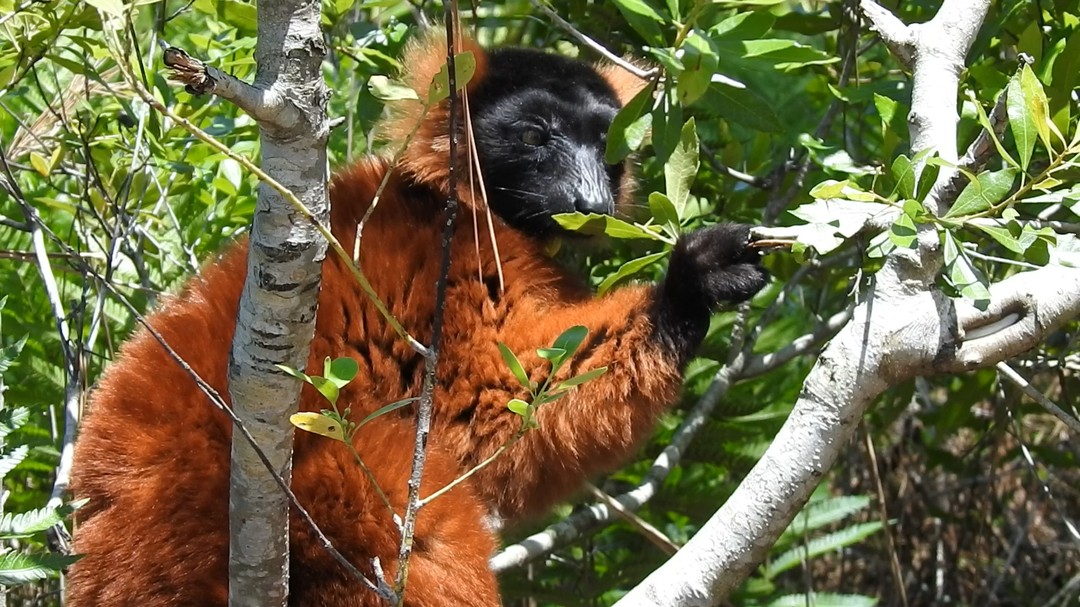Summary:
– The Red Ruffed Lemur is a fascinating primate species found in the forests of Madagascar.
– Wax myrtle Due to their nutritional value,aves are a preferred snack for Red Ruffed Lemurs due to their e unique adaptations that enable them to survive in their forest habitats.
– Conservation efforts are crucial for the protection of these endangered lemurs.
– Red Ruffed Lemurs are social creatures with interesting behaviors and interactions.
Snack Time! Red Ruffed Lemur Onilahy is Enjoying Some Wax Myrtle Leaves in the Forest
The forests of Madagascar are home to a wide array of unique and captivating animal species, and among them is the Red Ruffed Lemur (Varecia rubra). These charismatic primates are known for their striking appearance, playful behavior, and fascinating adaptations that enable them to thrive in their forest habitats. Join us as we delve into the world of the Red Ruffed Lemur and discover the captivating aspects of their snack time adventures.
One of the preferred snacks for these lemurs is wax myrtle leaves. These aromatic leaves provide a proper treat and offer the nutrients necessary for the lemurs’ well-being. Wax myrtle leaves contain vitamins, minerals, and antioxidants that contribute to the overall health of Red Ruffed Lemurs, making it a perfect choice for their snack time. Red Ruffed Lemur is a highly endangered species, primarily due to habitat loss and fragmentation caused by human activities. Their forest homes are being rapidly destroyed, pushing these lemurs to the brink of e understanding their unique and fascinating aspects; we can cultivate a sense of appreciation and raise awareness about the importance of their conservation.
These lemurs possess numerous fascinating adaptations that contribute to their survival. Firstly, their vibrant red fur is not only visually striking but also serves as camouflage within the lush forest environment. Additionally, their long and slender fingers allow them to expertly grasp branches, aiding them in navigating the intricate canopy network. Red Ruffed Lemurs also possess a keen sense of smell, enabling them to locate food sources and communicate with fellow lemurs through scent marking.
Conservation efforts play a vital role in protecting the Red Ruffed Lemur population. Organizations and initiatives focus on habitat preservation, captive breeding programs, and raising awareness about the lemurs’ precarious situation. By supporting these conservation endeavors, we can contribute to the survival of this incredible species and help ensure a future where Snack time! Red Ruffed Lemur Onilahy and its counterparts can continue to enjoy the wax myrtle leaves in their natural habitat.
Observing Red Ruffed Lemurs during snack time reveals their social nature and complex behaviors. They engage in food-sharing, grooming, and vocalizations to communicate within their group. The lemurs utilize varied uses, including soft purrs, grunts, and shrieks, to convey their emotions and intentions. Their interactions during snack time underscore the importance of social bonds and cooperative behavior within their communities.
The Red Ruffed Lemur’s snack time also offers a glimpse into their dietary preferences. While wax myrtle leaves are a favored choice, these lemurs exhibit an adaptable diet and consume a variety of other plant parts such as fruits, flowers, and seeds. This dietary flexibility allows the exploitation of available resources and showcases their crucial role as seed dispersers, aiding in the regeneration of their forest ecosystem.
Intriguing facts about Red Ruffed Lemurs continue to captivate researchers and nature enthusiasts alike. Did you know that these lemurs are one of the largest primates on the island of Madagascar? Their distinct vocalizations can be heard from a considerable distance, making it easier for researchers to locate and study them in the dense forests. Moreover, like other lemur species, Red Ruffed Lemurs engage in a behavior known as “sunbathing,” where they sit with their arms outstretched, absorbing sunlight to warm themselves and potentially aid in digestion.
Snack time! Red Ruffed Lemur Onilahy’s enjoyment of wax myrtle leaves in the forest unveils a tapestry of unique and fascinating aspects. From their preferred snacks to their captivating adaptations, social interactions, and crucial conservation needs, these lemurs continue to hire us. Let us cherish and protect these endangered primates, ensuring a future where Snack time! Red Ruffed Lemur Onilahy and its fellow lemurs can thrive in their natural habitat, spreading joy and wonder in the world of wildlife.
*****
Source Description
Snack time! Red ruffed lemur Onilahy is enjoying some wax myrtle leaves in the forest.

